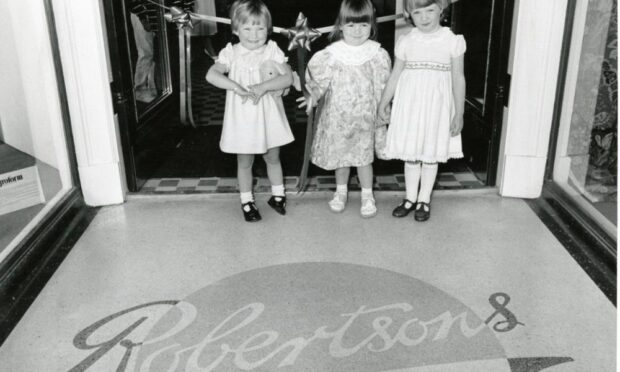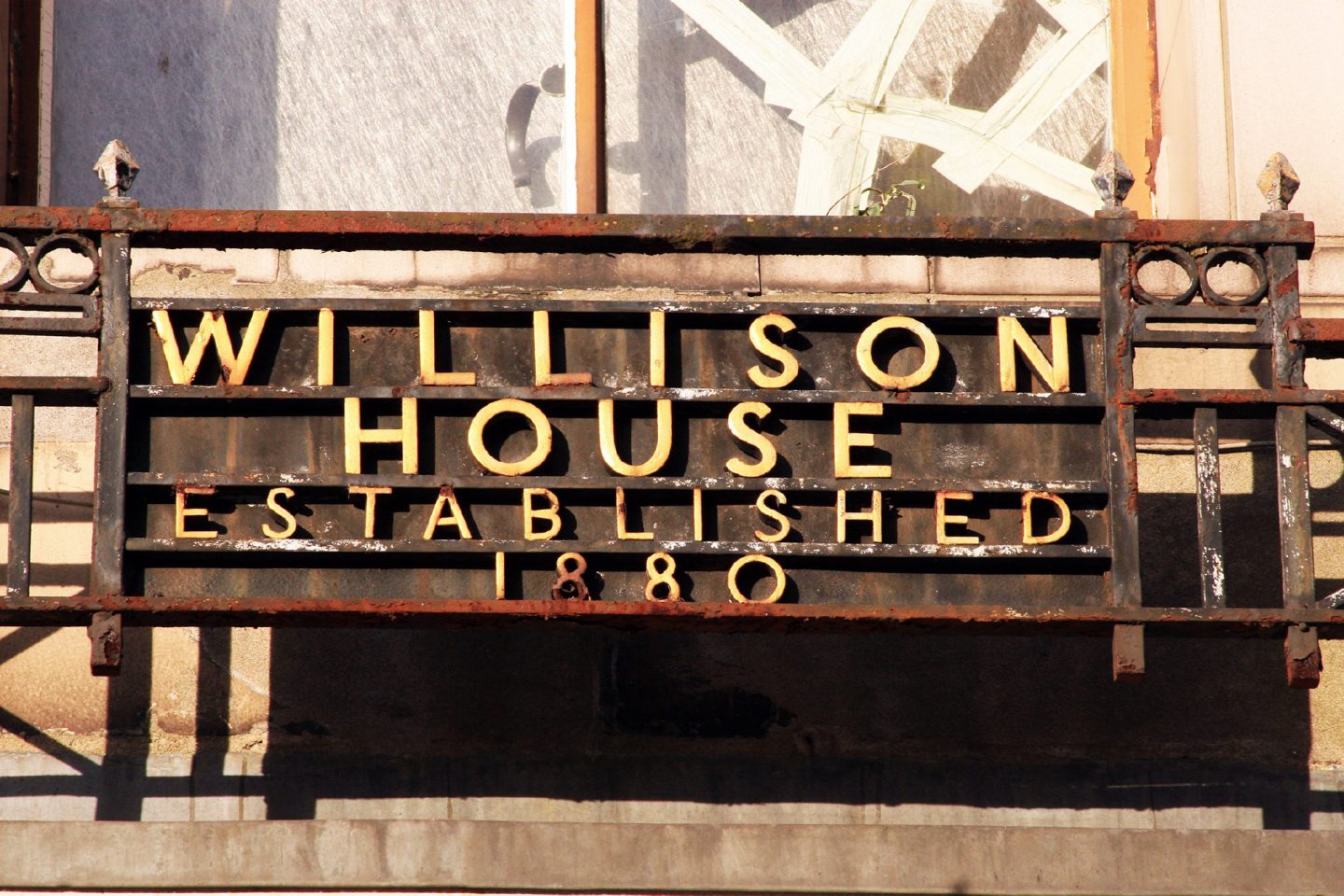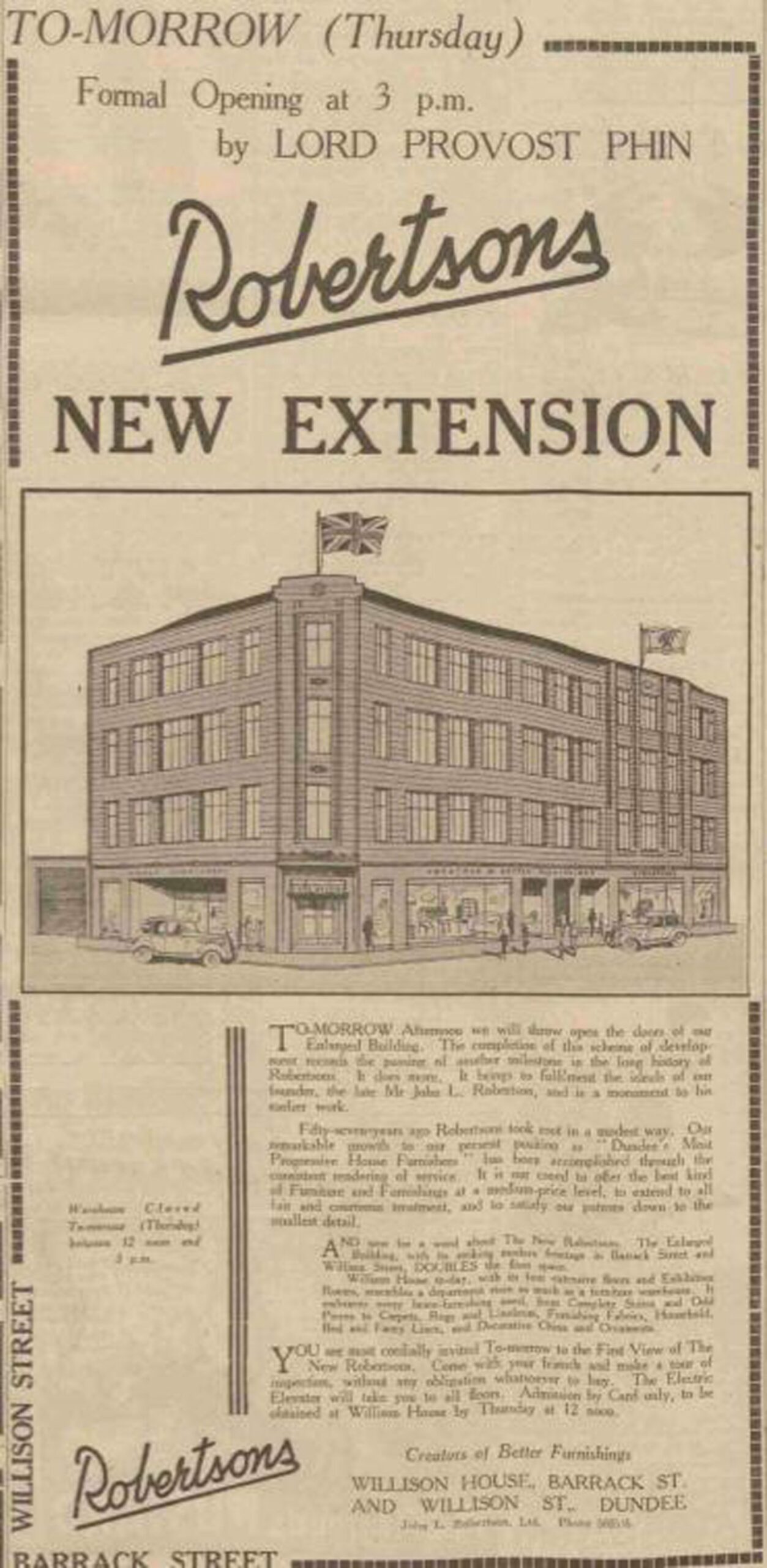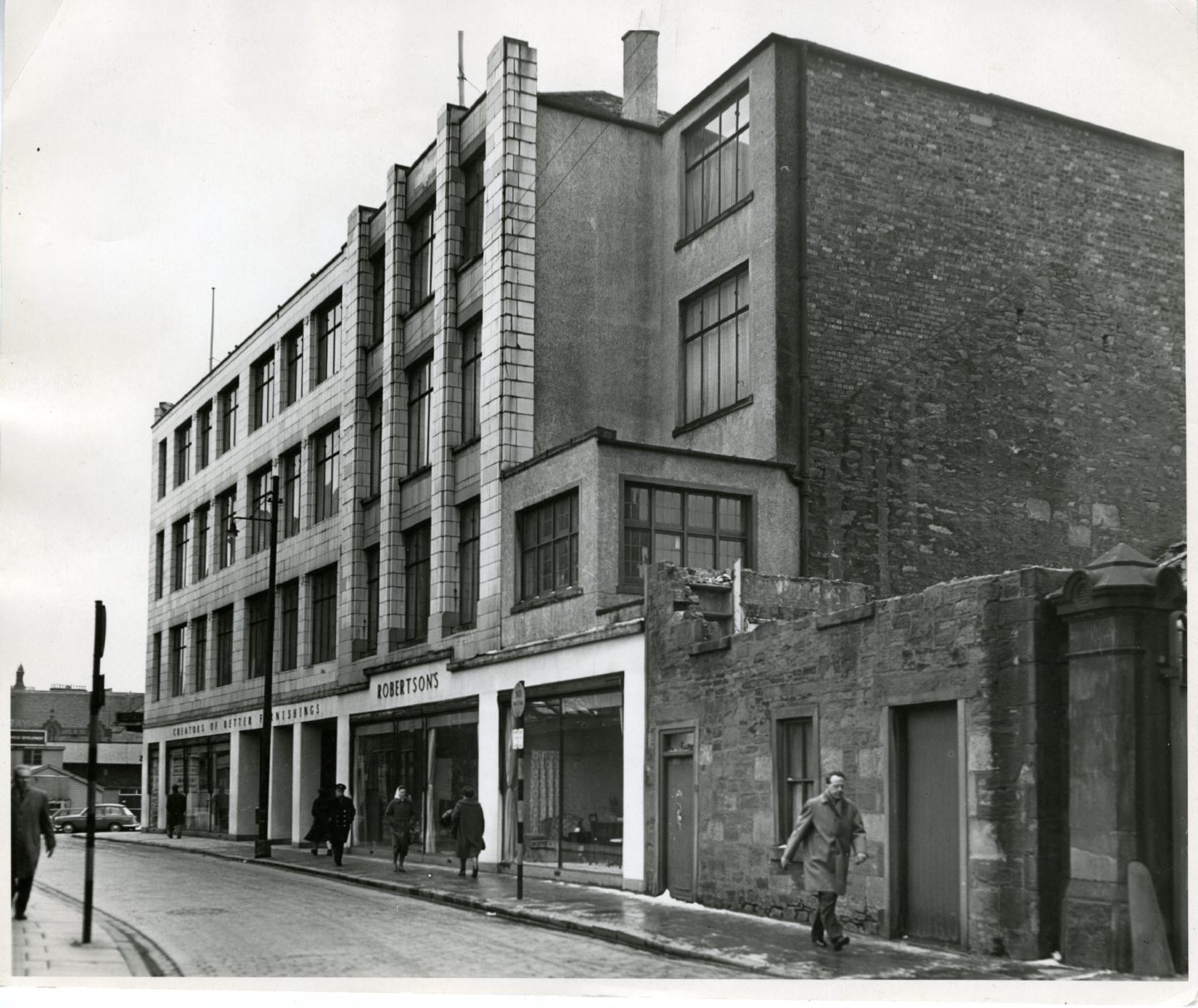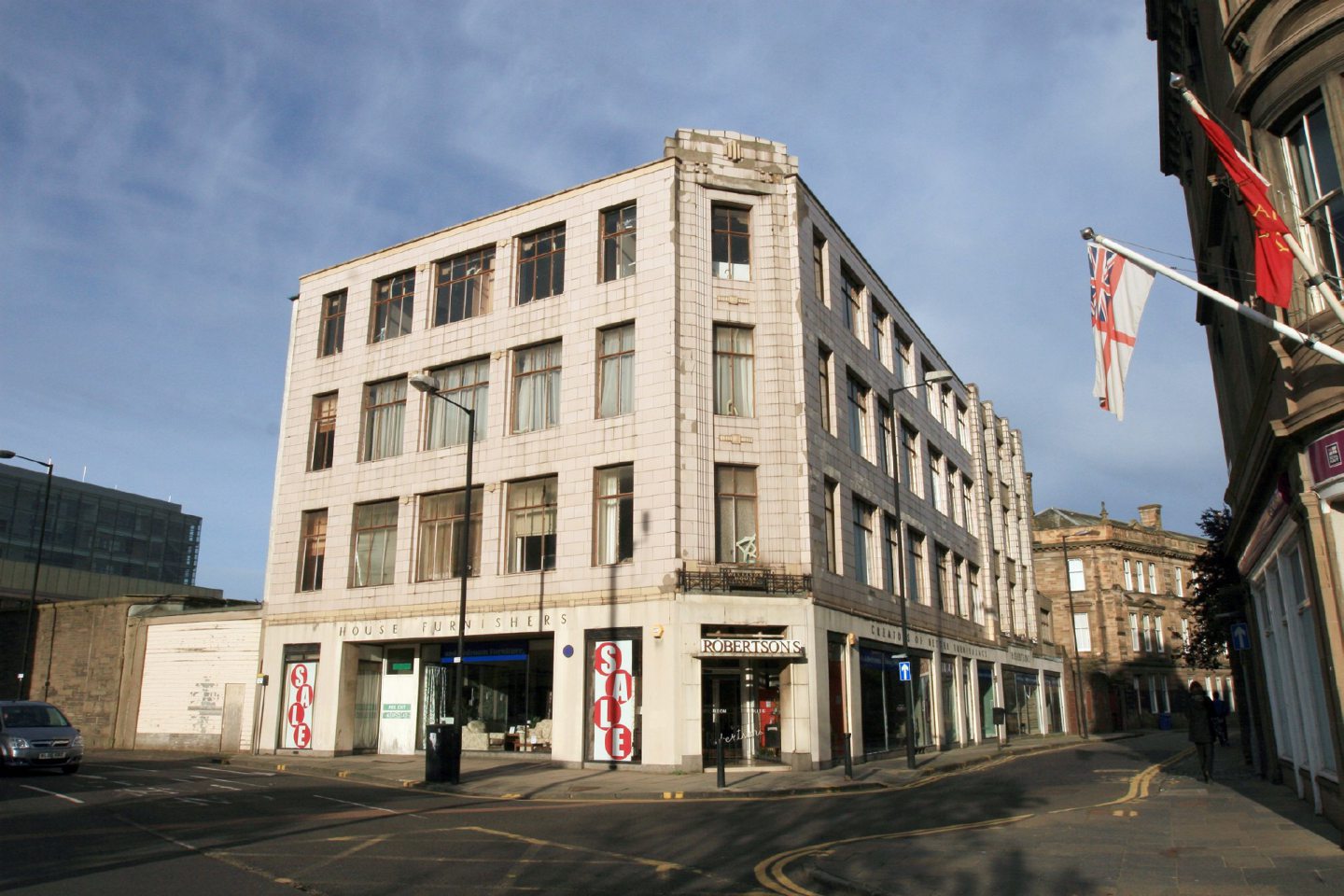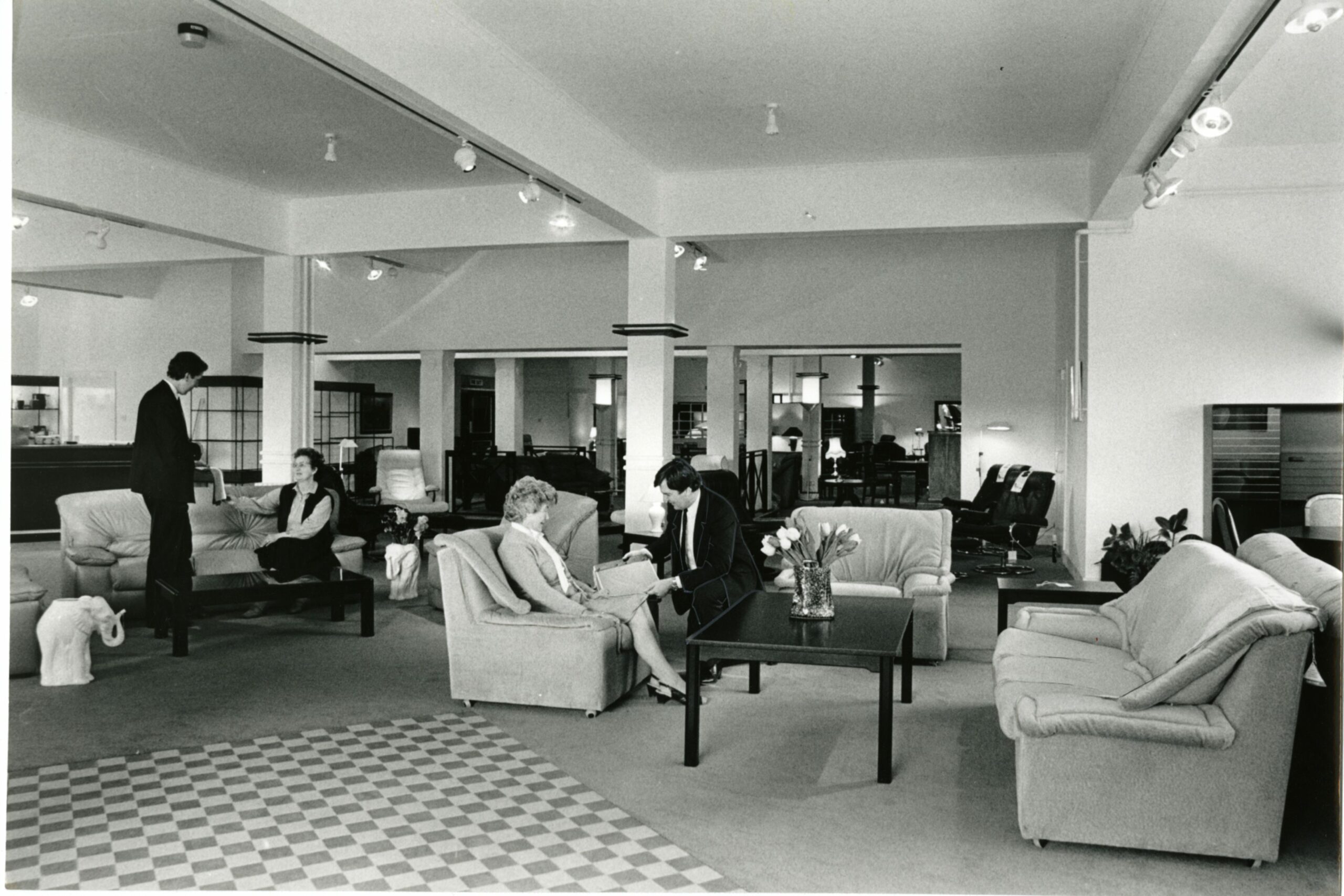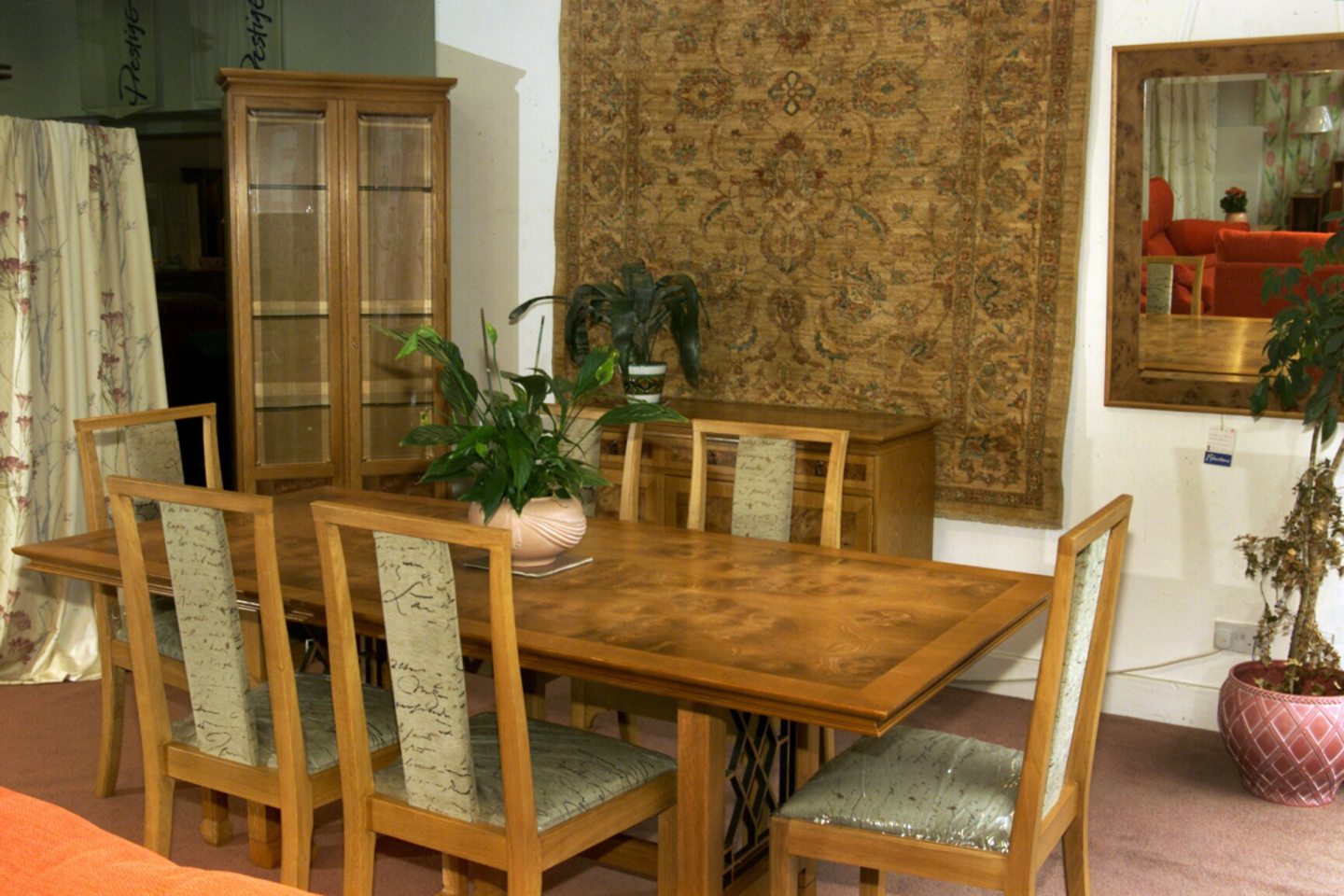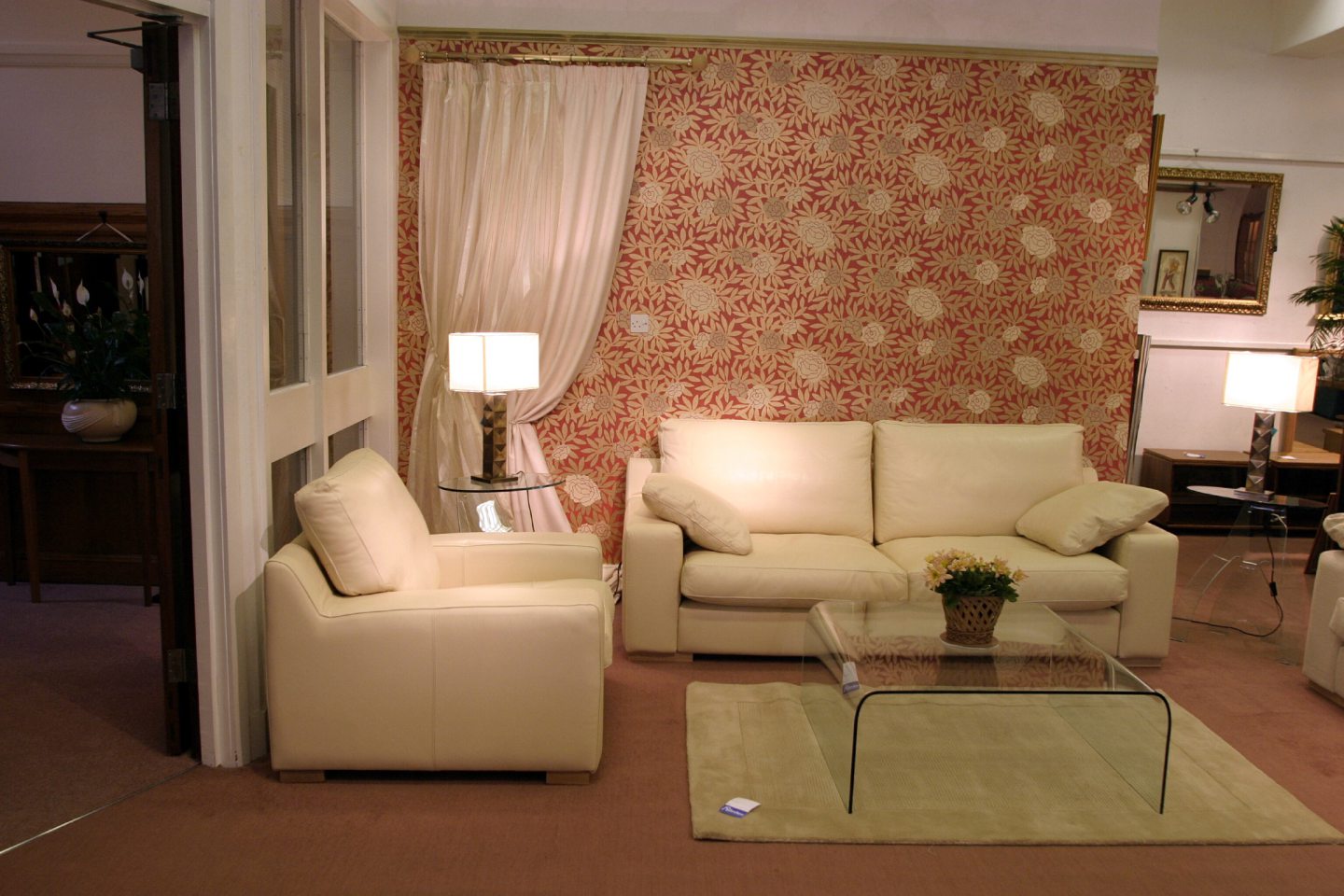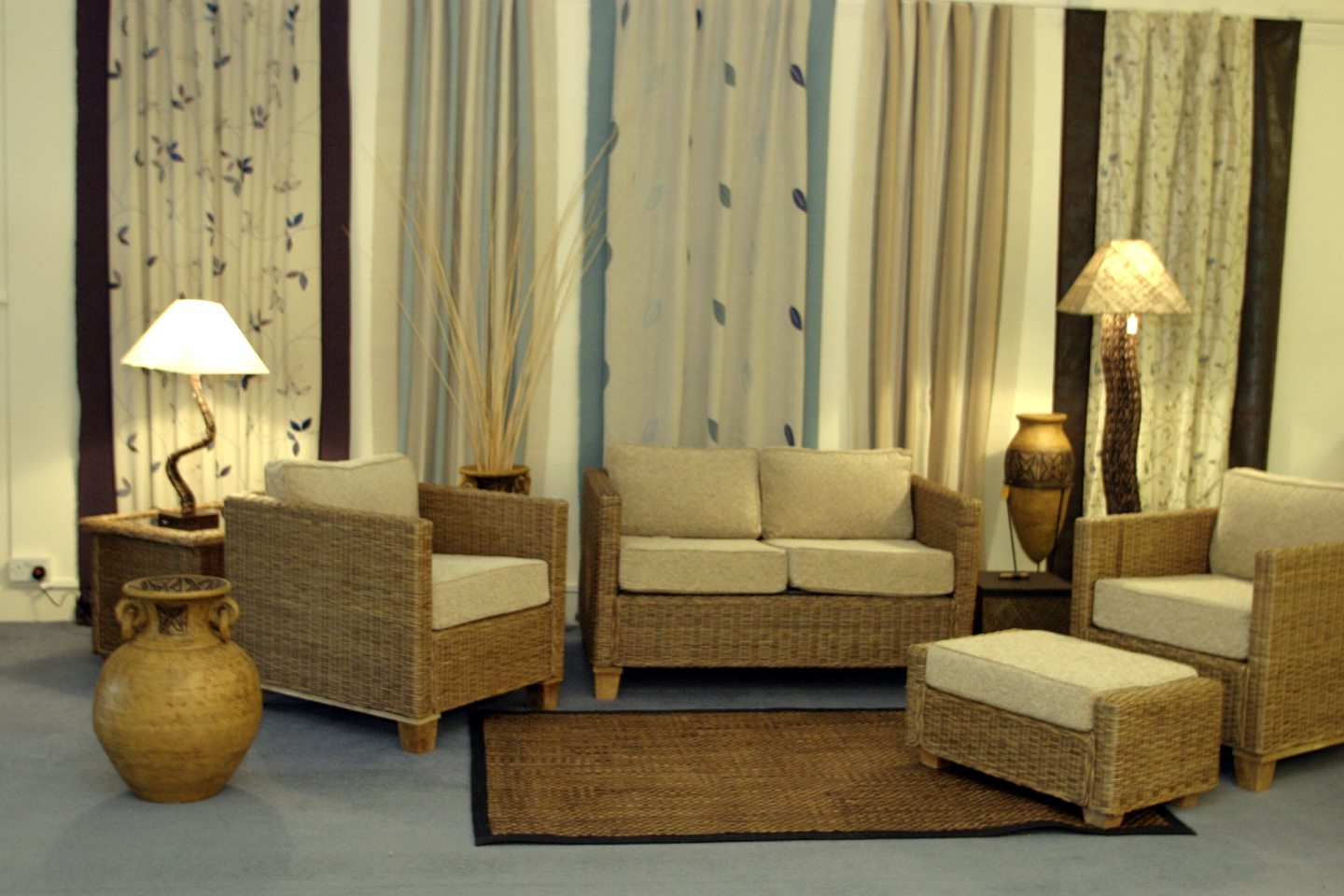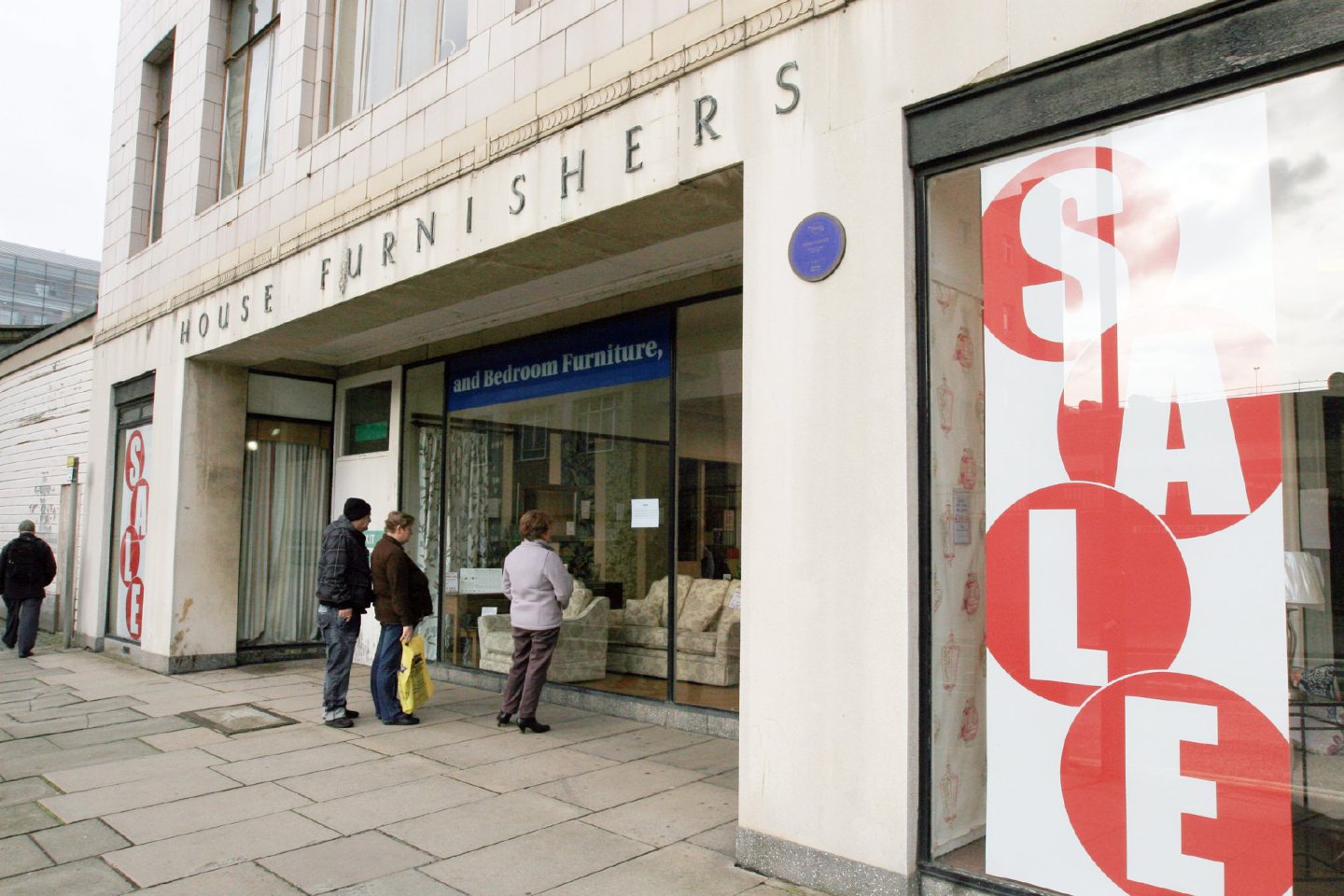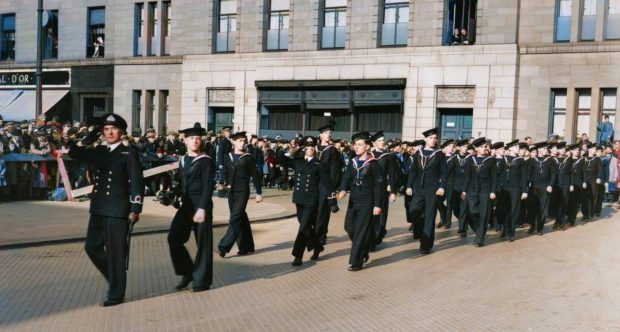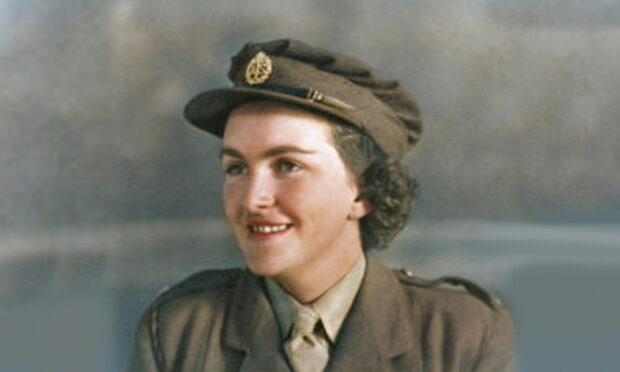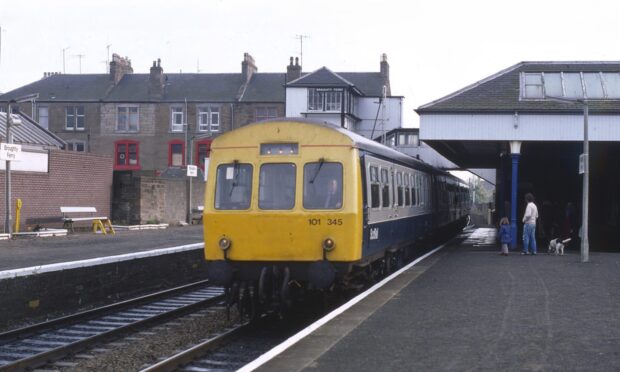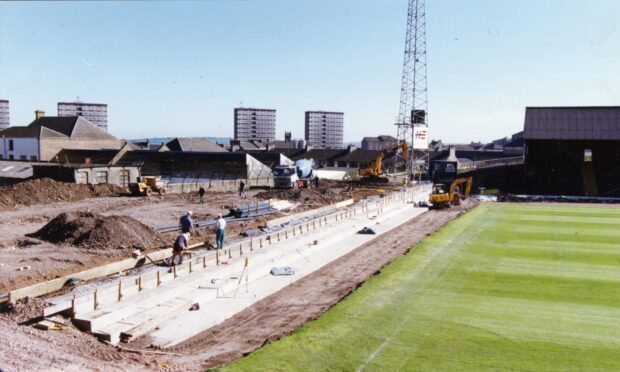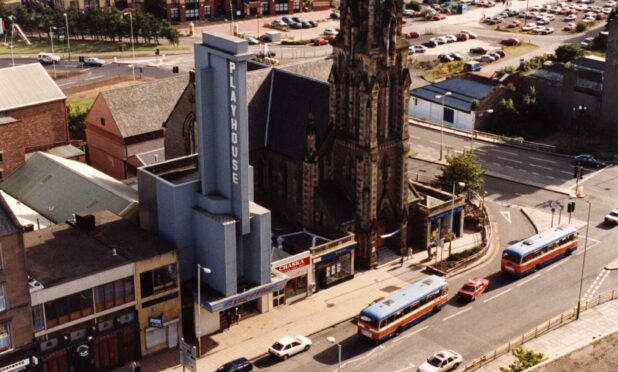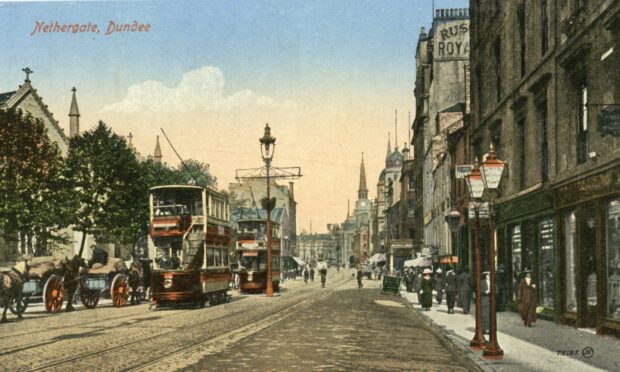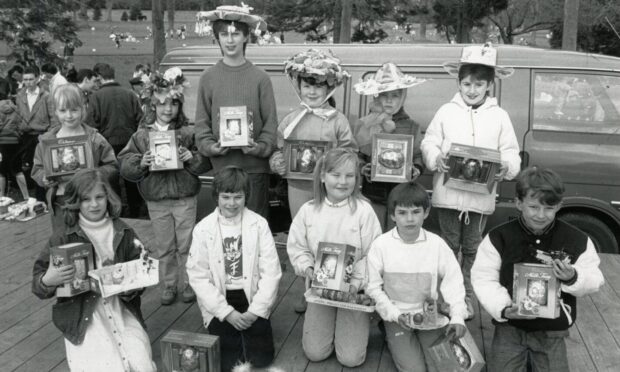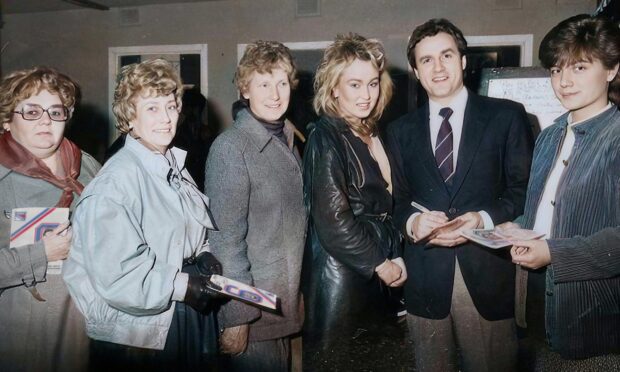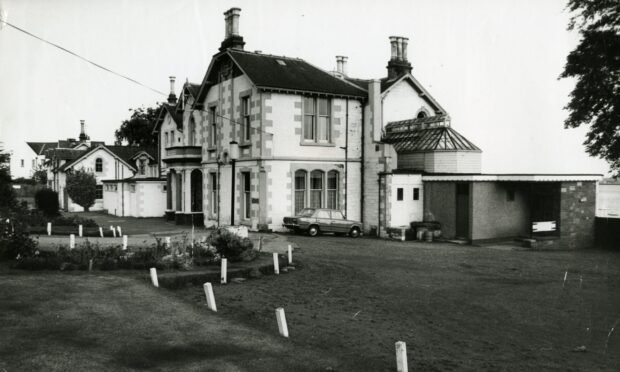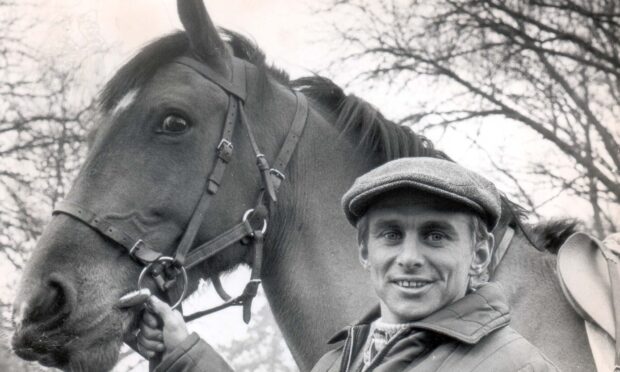Almost a century of history went up in smoke on Saturday evening when Robertson’s former art-deco premises in Dundee’s Barrack Street were engulfed by a devastating fire.
The firm started life in 1880 when John L. Robertson started buying and selling second-hand furniture.
He showed great entrepreneurial spirit and drive.
It quickly grew to become the premier furniture and furnishings store in the City of Discovery and part of its very fabric.
We have opened up DC Thomson’s archives to chart the history of the business, which was at the heart of the ever-changing face of Dundee for over 130 years.
Humble beginnings
The family-owned business began operating from Bell Street Hall next to the YMCA and the Central Showrooms in South Lindsay Street opposite the Old Steeple.
The firm bought and sold furniture and quickly outgrew its humble beginnings and moved to new showrooms at Willison House which opened in 1929.
A hint of the firm’s Victorian heritage was a wrought iron sign above the terrazzo Barrack Street entrance reading: ‘Willison House, established 1880’.
A 14 days’ special opening sale took place in June 1929 which included a three-piece bedroom suite for £29 and three-piece silk damask lounge room suite for £24.
The landmark Art Deco façade at Willison House was extended in 1937.
At the time, a report described the new addition of a “majestic corner entrance” and extra windows which created “space, airiness and abundance of light”.
The extension enlarged the floorspace by a third, while the drab streetscape gave way to the latest floodlighting technology.
The Evening Telegraph said at the time: “Progress and time bring in their wake irredeemable changes, and probably nowhere is this more noticeable than in city streets where old buildings must give way to modern clean-cut structures more in keeping with the needs of the time.
“This is the case with Willison House, the up-to-date establishment of John L. Robertson Ltd in Barrack Street, Dundee, and tomorrow afternoon Lord Provost Phin will formally declare open a large new extension which links up the firm’s premises with Willison Street.
“A majestic corner entrance adds to the appearance of the handsome block, designed in keeping with the distinctive architecture of the premises, now a few years old.
“The improvements enlarge the accommodation of the firm by one and a third, while the facilities of window display is more than trebled.
“Compared with the buildings which occupied the site less than a year ago the new establishment may be said to epitomise modern outlook.
“There is a sense of space and airiness and abundance of light, the like of which was unknown to the generation that saw the first of the old building.
“Excavation of part of the ground was found necessary to provide a spacious store underground, and here the heating installation of the entire building has been housed.
“Operated almost wholly on mechanical lines, the apparatus is a far cry from the days of deep-set fireplaces, which, incidentally, occupied practically the same position.”
The Barrack Street premises were illuminated with “exceptionally strong lamps which throw up the white purity of the surface in the night-time, while during the day the glint of the sun catches its snowy whiteness”.
A solid oak stairway, with chromium decorations topping the balustrade, was included in the extension while the enlarged window accommodation comprised 23.
Substance and style at Robertson’s
The family-owned business operated on four floors at their store in Barrack Street, selling a wide range of lighting, carpets, rugs, curtains, beds and, of course, furniture.
Robertson’s furniture store exuded style throughout the decades which followed and catered for the character of every home, whether it was modern or traditional.
Speaking in 1999, then-managing director Brian Cram, whose great-grandfather was the founder John L. Robertson, revealed why they had stood the test of time.
He said: “We have made a great virtue out of our long-lasting commitment to service and to value for money, and sometimes these traditional values are regarded as a bit old- fashioned.
“We wanted to take this opportunity to show that John L. Robertson’s is modern-thinking, keen to embrace the new information technologies and that we are planning and working to ensure that our business will still be around to serve future generations of Dundonians.
“We will never use mere price and promotional stunts to push our business forward.
“Our customers have come to know that they can always trust us to act in their best interests.
“We don’t have continual marketing tricks or gimmicks – we know that our customers are more perceptive than most and that they would see through immediately any kind of ruse which is designed simply to create business.
“Our philosophy is simply to sell at the same price as our competitors. In this way, our prices remain fair.
“We want to provide good, sound advice and the sort of service which makes our customers feel they have no need to shop elsewhere.
“Just think of our shop as a cross between a paint box and a building set. We use the samples of carpets and curtains along with the lights and furniture to build up the room set for each customer.
“There are very few shops in Scotland that run such a complete interior furnishing service, and such is one of our strengths.”
The final curtain
People of a certain age might remember seeing curtains displayed in around 400 hanging samples to allow the customer to see the effect of the material.
Specialist staff were always on hand to offer design and colour advice.
Robertson’s could also boast the most extensive range of quality rugs in the area which included hand-woven traditional examples from Afghanistan and Pakistan, sculptured rugs from China and modern designs for the more minimalist home from India.
The family firm occupied the B-listed building until Robertson’s fell into administration in 2011, shutting up the shop with the loss of 16 jobs.
Liquidators said the firm was not able to trade profitably.
However, the store remained open for a short period so as much stock as possible could be sold off.
Ken Pattullo, from liquidators Begbies Traynor, said: “The demise of a once thriving family firm is sad, and particularly when it involves the loss of this many jobs.
“However, the business is simply not able to trade profitably, and will have to close once we have sold the remaining stock in a clearance sale.”
The shutters came down on the family-run furniture emporium which was boarded up and the once-sophisticated building became a target for vandals.
The building experienced the full ravages of time over the next decade and cracks began appeared in its cladding, windows started to buckle and there was water damage.
Proposals to turn the site into student accommodation were turned down in 2017, and Dundonians launched a petition to see the exterior saved in future development plans.
In 2018 consent was given for the building to become a boutique hotel and bar, knocking down large parts of the original structure, but maintaining the façade.
These were among various proposals to repurpose the prominent building which were mooted but none were successful and it was put up for sale again in 2021.
Sadly there was to be no happy ending for this much-loved and iconic building.
